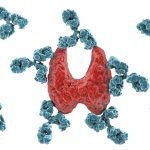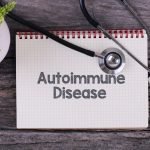Herbs & Autoimmunity: Using Botanicals to Balance T-Cell Activity
Vis Medicatrix Naturae
Tanya Lee, ND
Autoimmune diseases are complex, multifactorial conditions that arise from the loss of “self tolerance” and the infiltration of inflammatory cells within the target tissue. The pathogenesis of autoimmune diseases appears to be dependent on the differentiation patterns of the CD4+ T-helper-cell family that lead to uncontrolled innate and adaptive immune responses.1 It was once thought that Th1 cells were the main mediators of the autoimmune response; however, more recent research has revealed that Th17 – and the balance between Th17 cells and regulatory T (Treg) cells – also plays a central role in the pathogenesis of autoimmune disease. The balance between Th1/Th17 and Th2/Treg cells has been found to be significantly altered in autoimmune patients, and both Th1 and Th17 are now known to drive pathogenesis in a plethora of autoimmune conditions (eg, multiple sclerosis, inflammatory bowel disease, and systemic lupus erythmatosus, among others) through excessive production of proinflammatory cytokines such as interferon-gamma (IFNγ), interleukin (IL)-17, IL-6, and IL-23.2-4 Studies using a murine model for multiple sclerosis (MS) and experimental autoimmune encephalitis (EAE) found that the transfer of myelin oligodendrocyte-specific Th1 and Th17 cells induced EAE in naive mice, whereas Th2 cells did not.1
Th17 & Regulatory T-Cells
IL-17 is a promoter of inflammation, activating proinflammatory cytokines such as nuclear factor-kappa B (NF-ĸB) (via the JAK/STAT signaling pathway), which in turn activates further production of IL-17.5 Along with IL-17A and IL-17F, Th17 cells secrete the proinflammatory cytokine IL-22.1 The natural role of Th17 cells is to provide immune defense against fungi and extracellular bacteria; however, overproduction of Th17 cells (and the associated cytokine IL-17) has been implicated as a major contributor to the induction and maintenance of a number of autoimmune diseases.6 In MS, the Th17 cytokines IL-17 and IL-22 appear to cross the blood-brain barrier (thus gaining access to the central nervous system) and promote inflammation that contributes to demyelination.7 Th17-cell differentiation is mediated by the activation of transcription factors RORyT and STAT3 by the cytokine transforming growth factor-beta (TGFß) in the presence of IL-6, whereas the expansion of Th17 cells is mediated by IL-23.1,8
Treg cell differentiation is mediated by the activation of transcription factor Foxp3 via TGFß, but only in the absence of IL-6.1 In contrast to Th17, Treg cells are primarily responsible for immunomodulation and stability of self-tolerance; disruptions in this homeostatic environment can highly influence autoimmune expression. Inflammatory bowel disease (IBD) exhibits this through an increased concentration of Th17 (and the cytokines IL-17 and IL-6) and low expression of TGFß found in Peyer’s patches of IBD patients.2 Treg cells have been found to play an immunosuppressive role in autoimmune disease by inhibiting Th17 via the secretion of IL-10; similarly, IL-4 secretion by Th2 cells has been shown to inhibit Th1 cell responses, contributing to remission in conditions such as MS.4
There are 2 types of Treg cells. The first type is thymus-derived natural Tregs (nTregs), which are primarily responsible for preventing autoimmunity. The other type of Treg cells is post-thymic-induced Tregs (iTregs), which are influenced by the surrounding cytokine environment. These are abundantly found in the ileum, within the Peyer’s patches of the gut-associated lymphoid tissue (GALT).1 The primary function of iTregs is to suppress overactive immune responses and help maintain tolerance toward environmental and food triggers within the gut.2
Based on what is now known about effects of immune imbalances on autoimmunity, it makes sense that the most efficacious therapeutic strategies would help shift T-cell responses away from proinflammatory Th1 and Th17, and toward anti-inflammatory Treg cells. The complementary nature of human and plant physiology makes the understanding of T-cell patterns, and the matching them to medicinal plants, one of our best strategies for neutralizing disruptions within the dynamic immune environment.
Herbal Medicine & Immunity
There has been a growing interest in the use of plant extracts to balance T-cell responses. Pharmaceutical approaches to influence T-cell patterns have suggested how effective this approach can be. For example, IL-17A blockage drugs essentially clear psoriasis, and IL-6 blockade is effective in the management of rheumatoid arthritis (RA).5,9 Unfortunately, these therapies are extremely expensive and come with a plethora of potentially debilitating side effects. Herbal medicine offers a balanced approach to modulating disease activity in autoimmune conditions. Herbs also have the potential to be used along with pharmaceutical treatments to complement the activity of the drugs, attenuating their side effects and preventing the need for increased medication use. Following are commonly used herbs that have been found to have strong immune-modulating properties, thus offering promise in the management of autoimmune disease.
Astragalus
Astragalus is an adaptogenic herb that is well known for its use in traditional Chinese medicine to strengthen immune activity. In fact, the herb is so well known for this property that many practitioners have been advised to avoid using it in autoimmune cases so as not to “overstimulate” the immune system. However, recent experimental studies on the pharmacological profile of astragalus have shown that the herb can be better described as immune modulating than immune stimulating.
The immune-modulating activity of astragalus and its constituents has been well documented in preliminary research studies that suggest that astragalus has great potential in the treatment of autoimmune disease. For instance, in a study by Kang et al, astragalus root was shown to downregulate IFNγ and increase IL-4 production in murine CD4+ T-cells (both in vivo and in vitro), as well as enhance polarization toward Th2.10 More recently, Lv et al published a study which found astragalus polysaccharides (APS) to effectively improve colitis disease activity in dextran sulfate sodium (DDS)-induced colitis in mice – considered the best animal model for human ulcerative colitis (UC).11 These results were achieved through the reduction of NF-ĸB activation, which in turn reduced the secretion of the Th17 inflammatory cytokines TNFα, IL-1ß, IL-6, and IL-17.11 In a rat study conducted by Zhao et al, APS were shown to reduce proinflammatory cytokines IL-6, IL-17, and IL-23, while enhancing the number of Tregs in Peyer’s patches in 2,4,6-trinitrobenzene sulfonic acid-induced experimental colitis.2 A study by Yang et al, published in January 2019, examined the constituent astragaloside IV (ASI), a triterpenoid saponin, in an experimental autoimmune encephalomyelitis (EAE) mouse model, the most common model used for MS.4 Compared to the non-treated mice, ASI treatment at the onset of induced EAE remarkably reduced inflammatory infiltration of the neurological tissue, thereby attenuating demyelination and reducing inflammatory infiltration of the brain and spinal cord. These results were found to be mediated through ASI-induced reduction of Th1 and Th17 and the promotion of Tregs in the spleen and CNS; changes in cytokines included a reduction of proinflammatory IL-17 and IFNγ and an increase of anti-inflammatory IL-10. This study further explains these findings by demonstrating ASI-mediated attenuated gene expression of transcription factors T-bet (Th1), RORyT (Th17), and an increase in gene expression of Foxp3 (Treg). These effects were demonstrated in both chronic and relapsing-relapsing-remitting models of EAE.4
Berberine
Berberine is an isoquinoline alkaloid found in a number of plants, such as Berberis vulgaris and Hydrastis canadensis. Berberine, which is well known for its use in treating digestive and metabolic disruptions, also possesses potent immune-modulating properties. As a result, it has been studied in experimental autoimmune models.
Cui et al recently found that when berberine was administered to mice with DDS-induced UC, Treg/Th17 balance was improved, but only if the mice maintained their normal intestinal flora; mice that had been subjected to sterilization of the intestinal flora were unaffected.12 This indicates the mechanism by which berberine exerts its Treg/Th17 balancing effects may be through modulation of the normal gut flora. In another study, which examined TNBS-induced Crohn’s disease in mice, berberine was found to reduce Th17 and Th1 differentiation, as well as their associated cytokines.13 In this study, berberine appeared to exert these actions by inhibiting the activation of NF-ĸB. There have a been a number of animal studies on the effects of berberine on IBD, all of which have shown similar patterns of reduced Th1 and Th17 differentiation and the amelioration of IBD symptoms.14
Studies are not limited to IBD autoimmunity; Cui et al found that berberine was able to prevent progression of type 1 diabetes in mice by reducing Th1 and Th17 activity.15 This was accomplished by inhibiting the JAK/STAT intracellular signaling pathways known to promote the proliferation of these T cells, and by upregulating ERK1/2, a pathway known to suppress Th17. An EAE mouse model also demonstrated berberine to block Th17 differentiation through direct inhibition of the JAK/STAT pathway.16 Using an RA rat model, berberine was found to improve disease severity, again by reducing cytokines IL-17 and IL-6, and enhancing IL-10 and TGFß levels – changes that correlated with reduced inflammatory cell infiltration in the synovial joints.17,18 Similar findings were observed in cell sample supernatants from patients with ocular presentation of Behcet’s disease, in which berberine was shown to suppress Th17 differentiation through the inhibition of STAT3 gene expression.19
Curcumin
Curcumin, the active constituent of the rhizome of Curcuma longa, is well known and widely used for its anti-inflammatory, anti-tumor, and immunomodulating properties. Pre-clinical evidence suggests that part of this polyphenol’s biological activity can be attributed to its ability to reduce Th17 and restore balance between Th1/Th2 and Th17/Tregs. Recent in-vivo studies suggest that curcumin’s impact on autoimmune disease may involve the reduction and suppression of proinflammatory cytokines (eg, IL-17, IL-1, IL-6, IL-23, TNFα, and IFNγ), the inhibition of the JAK/STAT and NF-ĸB intracellular signaling pathways, and the inhibition of Th1 and Th17 differentiation. These mechanisms have been demonstrated in both in-vivo and in-vitro models for myasthenia gravis, systemic lupus erythematosus (SLE), and MS.3,5,7,20,21 In a recent clinical study, Dolati et al found that oral nanocurcumin (80 mg/day) reduced elevated levels of Th-17, IL-17, and IL-23 in 25 patients with MS after 6 months of use.22
Milk Thistle
Silybum marianum (milk thistle) is a plant from the Asteraceae family that has been traditionally used for the treatment of liver and gallbladder disorders. Silymarin, the active polyphenolic flavonoid complex derived from the fruit and seeds of milk thistle, is credited for most of the plant’s therapeutic effects. Silymarin is composed of flavolignans as well as flavonoids. Silybin (flavinolignin) is credited with being the most biologically active part of silymarin, comprising about 70-80% of silymarin content.23
In-vivo and in-vitro studies have revealed silymarin to be a potent anti-inflammatory and immunomodulator, with its main actions including the suppression of NF-ĸB and its products, the inhibition of TNFα, and the downregulation of the Th1 response.23,24 Another major mechanism by which silymarin works is through the downregulation and inhibition of mTOR, a signaling molecule required for regulation of adaptive immune cell activation.25 Milk thistle’s anti-inflammatory properties occur through the active constituent silibinin, which acts as an agonist to the intracellular estrogen receptor-beta (ERß), which is expressed in immune cells; low expression of ERß has been found to be correlated with increased disease activity in autoimmune conditions such as SLE and IBD.26 A recent study by Dupuis et al found that silibinin upregulated ERß expression, resulting in reduced levels of IL-17 and TNFα in RA patients, possibly through induced apoptosis of Th17 cells.26
Skullcap
Scutellaria baicalensis (skullcap) is a popular herb in Chinese medicine. The compound baicalin, a flavonoid isolated from the root of Scutellaria, has been found to attenuate the Th17 response in silica-induced lung inflammation and asthma.27,28 A recent RA mouse study by Yang et al found that baicalin reduced the Th17 cell population in splenic cells and blocked proinflammatory effects of IL-17, IL-6, and TNFα, resulting in reduced ankle swelling and joint destruction.6 And in an EAE mouse experiment, baicalin was found to reduce inflammation and demyelination within the CNS.29 These effects were achieved by attenuating Th1 and Th17 differentiation via inhibition of the JAK/STAT signaling pathway. As part of an experimental murine autoimmune uveitis model, baicalin was also found to inhibit intraocular inflammation by increasing Treg cells and reducing Th1 and Th17 cells.30
Other Herbs
Some additional herbs have been found to contain constituents that modulate Th17 and Treg responses. Examples include Arctium lappa (arctigenin), Metasequoia glyptostroboides (proanthocyanidin), Salvia miltiorrhiza (savianolic acid B), Radix sophorae (matrine), and the compound plumbagin, found in Droseraceae, Plumbaginaceae, Ancistrocladaceae, and Dioncophyllaceae families.5
Conclusion
The influence that plants and their extracts have on T-cell patterns suggests great potential for herbal medicines to modulate autoimmune disease activity, especially if applied during the early stages of disease. While more human studies are needed to better understand the clinical application of these herbs, physicians dedicated to the art and practice of herbal medicine can catalyze this process by using their deep knowledge of the energetics, pharmacology, and safety of plant medicine to observe results and share their findings.
References:
- Leung S, Liu X, Fang L, et al. The cytokine milieu in the interplay of pathogenic Th1/Th17 cells and regulatory T cells in autoimmune disease. Cell Mol Immunol. 2010;7(3):182-189.
- Zhao HM, Wang Y, Huang XY, et al. Astragalus polysaccharide attenuates rat experimental colitis by inducing regulatory T cells in intestinal Peyer’s patches. World J Gastroenterol. 2016;22(11):3175-3185.
- Momtazi-Borojeni AA, Haftcheshmeh SM, Esmaeili SA, et al. Curcumin: A natural modulator of immune cells in systemic lupus erythematosus. Autoimmun Rev. 2018;17(2):125-135.
- Yang L, Xing F, Han X, et al. Astragaloside IV regulates differentiation and induces apoptosis of activated CD4(+) T cells in the pathogenesis of experimental autoimmune encephalomyelitis. Toxicol Appl Pharmacol. 2019;362:105-115.
- Asadi-Samani M, Bagheri N, Rafieian-Kopaei M, Shirzad H. Inhibition of Th1 and Th17 Cells by Medicinal Plants and Their Derivatives: A Systematic Review. Phytother Res. 2017;31(8):1128-1139.
- Yang X, Yang J, Zou H. Baicalin inhibits IL-17-mediated joint inflammation in murine adjuvant-induced arthritis. Clin Dev Immunol. 2013;2013:268065.
- Qureshi M, Al-Suhaimi EA, Wahid F, et al. Therapeutic potential of curcumin for multiple sclerosis. Neurol Sci. 2018;39(2):207-214.
- Zhao G, Liu Y, Yi X, et al. Curcumin inhibiting Th17 cell differentiation by regulating the metabotropic glutamate receptor-4 expression on dendritic cells. Int Immunopharmacol. 2017;46:80-86.
- Amatya N, Garg AV, Gaffen SL. IL-17 Signaling: The Yin and the Yang. Trends Immunol. 2017;38(5):310-322.
- Kang H, Ahn KS, Cho C, Bae HS. Immunomodulatory effect of Astragali Radix extract on murine TH1/TH2 cell lineage development. Biol Pharm Bull. 2004;27(12):1946-1950.
- Lv J, Zhang Y, Tian Z, et al. Astragalus polysaccharides protect against dextran sulfate sodium-induced colitis by inhibiting NF-ĸB activation. Int J Biol Macromol. 2017;98:723-729.
- Cui H, Cai Y, Wang L, et al. Berberine Regulates Treg/Th17 Balance to Treat Ulcerative Colitis Through Modulating the Gut Microbiota in the Colon. Front Pharmacol. 2018;9:571.
- Li C, Xi Y, Li S, et al. Berberine ameliorates TNBS induced colitis by inhibiting inflammatory responses and Th1/Th17 differentiation. Mol Immunol. 2015;67(2 Pt B):444-454.
- Li YH, Xiao HT, Hu DD, et al. Berberine ameliorates chronic relapsing dextran sulfate sodium-induced colitis in C57BL/6 mice by suppressing Th17 responses. Pharmacol Res. 2016;110:227-239.
- Cui G, Qin X, Zhang Y, et al. Berberine differentially modulates the activities of ERK, p38 MAPK, and JNK to suppress Th17 and Th1 T cell differentiation in type 1 diabetic mice. J Biol Chem. 2009;284(41):28420-28429.
- Qin X, Guo BT, Wan B, et al. Regulation of Th1 and Th17 cell differentiation and amelioration of experimental autoimmune encephalomyelitis by natural product compound berberine. J Immunol. 2010;185(3):1855-1863.
- Wang X, He X, Zhang CF, et al. Anti-arthritic effect of berberine on adjuvant-induced rheumatoid arthritis in rats. Biomed Pharmacother. 2017;89:887-893.
- Yue M, Xia Y, Shi C, et al. Berberine ameliorates collagen-induced arthritis in rats by suppressing Th17 cell responses via inducing cortistatin in the gut. FEBS J. 2017;284(17):2786-2801.
- Yang Y, Wang Q, Xie M, et al. Berberine exerts an anti-inflammatory role in ocular Behcet’s disease. Mol Med Rep. 2017;15(1):97-102.
- Handono K, Pratama MZ, Endharti AT, Kalim H. Treatment of low doses curcumin could modulate Th17/Treg balance specifically on CD4+ T cell cultures of systemic lupus erythematosus patients. Cent Eur J Immunol. 2015;40(4):461-469.
- Wang S, Li H, Zhang M, et al. Curcumin ameliorates experimental autoimmune myasthenia gravis by diverse immune cells. Neurosci Lett. 2016;626:25-34.
- Dolati S, Ahmadi M, Rikhtegar R, et al. Changes in Th17 cells function after nanocurcumin use to treat multiple sclerosis. Int Immunopharmacol. 2018;61:74-81.
- Esmaeil N, Anaraki SB, Gharagozloo M, Moayedi B. Silymarin impacts on immune system as an immunomodulator: One key for many locks. Int Immunopharmacol. 2017;50:194-201.
- Gharagozloo M, Jafari S, Esmaeil N, et al. Immunosuppressive effect of silymarin on mitogen-activated protein kinase signalling pathway: the impact on T cell proliferation and cytokine production. Basic Clin Pharmacol Toxicol. 2013;113(3):209-214.
- Gharagozloo M, Javid EN, Rezaei A, Mousavizadeh K. Silymarin inhibits cell cycle progression and mTOR activity in activated human T cells: therapeutic implications for autoimmune diseases. Basic Clin Pharmacol Toxicol. 2013;112(4):251-256.
- Dupuis ML, Conti F, Maselli A, et al. The Natural Agonist of Estrogen Receptor beta Silibinin Plays an Immunosuppressive Role Representing a Potential Therapeutic Tool in Rheumatoid Arthritis. Front Immunol. 2018;9:1903.
- Liu T, Dai W, Li C, et al. Baicalin Alleviates Silica-Induced Lung Inflammation and Fibrosis by Inhibiting the Th17 Response in C57BL/6 Mice. J Nat Prod. 2015;78(12):3049-3057.
- Xu L, Li J, Zhang Y, et al. Regulatory effect of baicalin on the imbalance of Th17/Treg responses in mice with allergic asthma. J Ethnopharmacol. 2017;208:199-206.
- Zhang Y, Li X, Ciric B, et al. Therapeutic effect of baicalin on experimental autoimmune encephalomyelitis is mediated by SOCS3 regulatory pathway. Sci Rep. 2015;5:17407.
- Zhu W, Chen X, Yu J, et al. Baicalin modulates the Treg/Teff balance to alleviate uveitis by activating the aryl hydrocarbon receptor. Biochem Pharmacol. 2018;154:18-27.
 Tanya Lee, ND, received her Bachelor of Science degree (Honours) in Biochemistry and Biomedical Sciences from McMaster University, and was trained as a naturopathic doctor at the Canadian College of Naturopathic Medicine. Dr Lee practices full-time between 2 clinics, located in Toronto and Milton, Ontario. Although her primary-care practice focuses on family medicine, Dr Lee treats a wide variety of conditions, including endocrine disorders, infertility, digestive problems, cardiovascular disease, diabetes, insomnia, and fatigue. She has a special interest in the treatment of autoimmune diseases, as well as pediatric health.
Tanya Lee, ND, received her Bachelor of Science degree (Honours) in Biochemistry and Biomedical Sciences from McMaster University, and was trained as a naturopathic doctor at the Canadian College of Naturopathic Medicine. Dr Lee practices full-time between 2 clinics, located in Toronto and Milton, Ontario. Although her primary-care practice focuses on family medicine, Dr Lee treats a wide variety of conditions, including endocrine disorders, infertility, digestive problems, cardiovascular disease, diabetes, insomnia, and fatigue. She has a special interest in the treatment of autoimmune diseases, as well as pediatric health.










